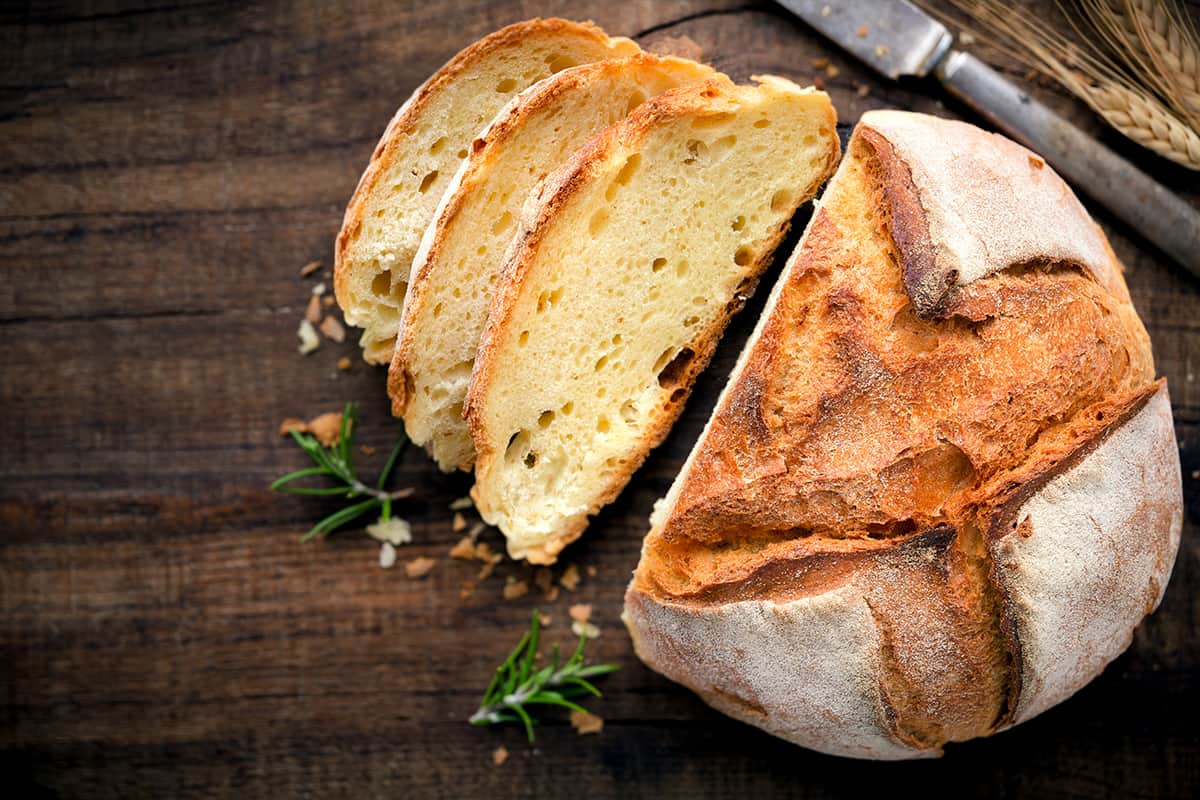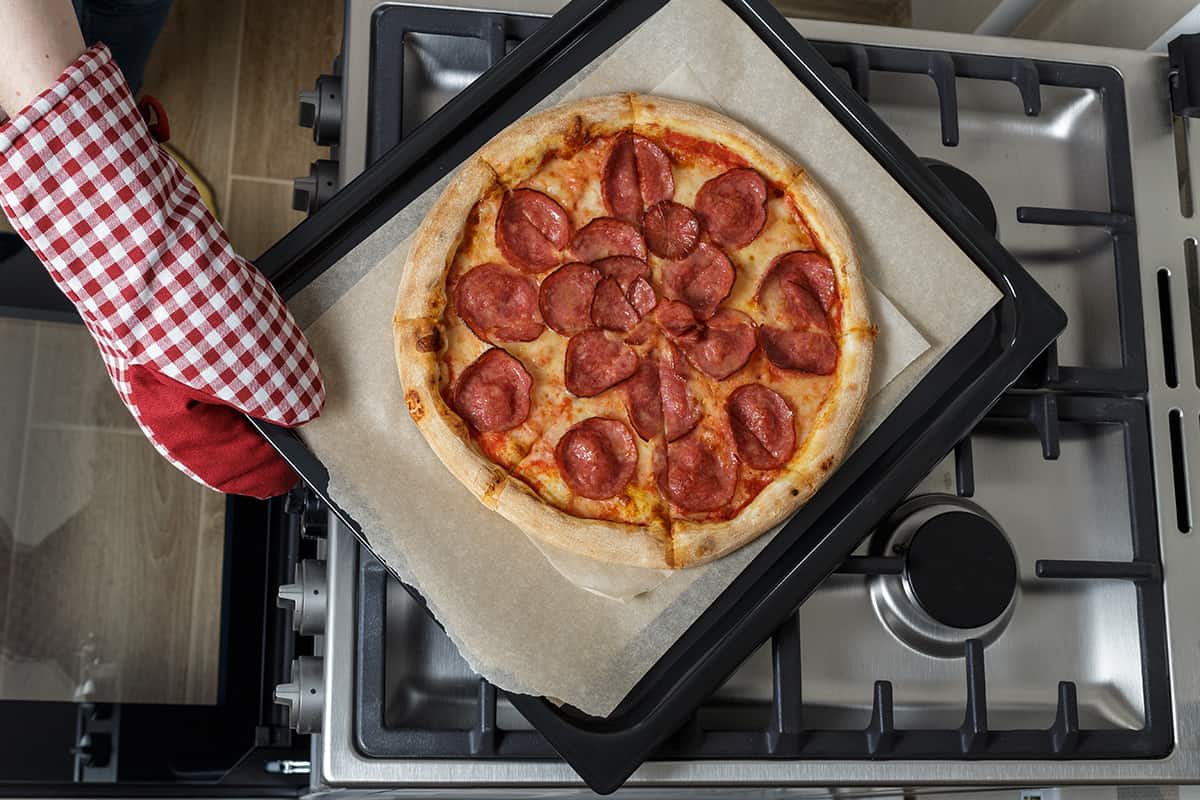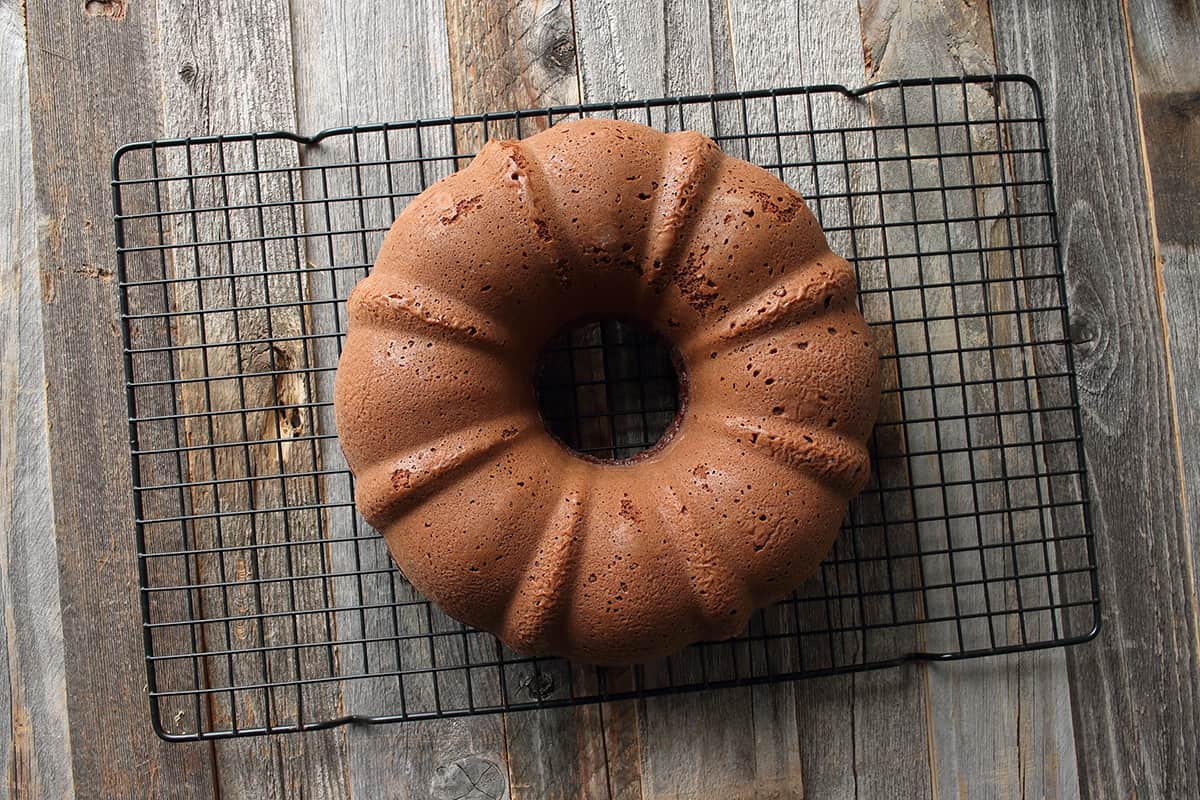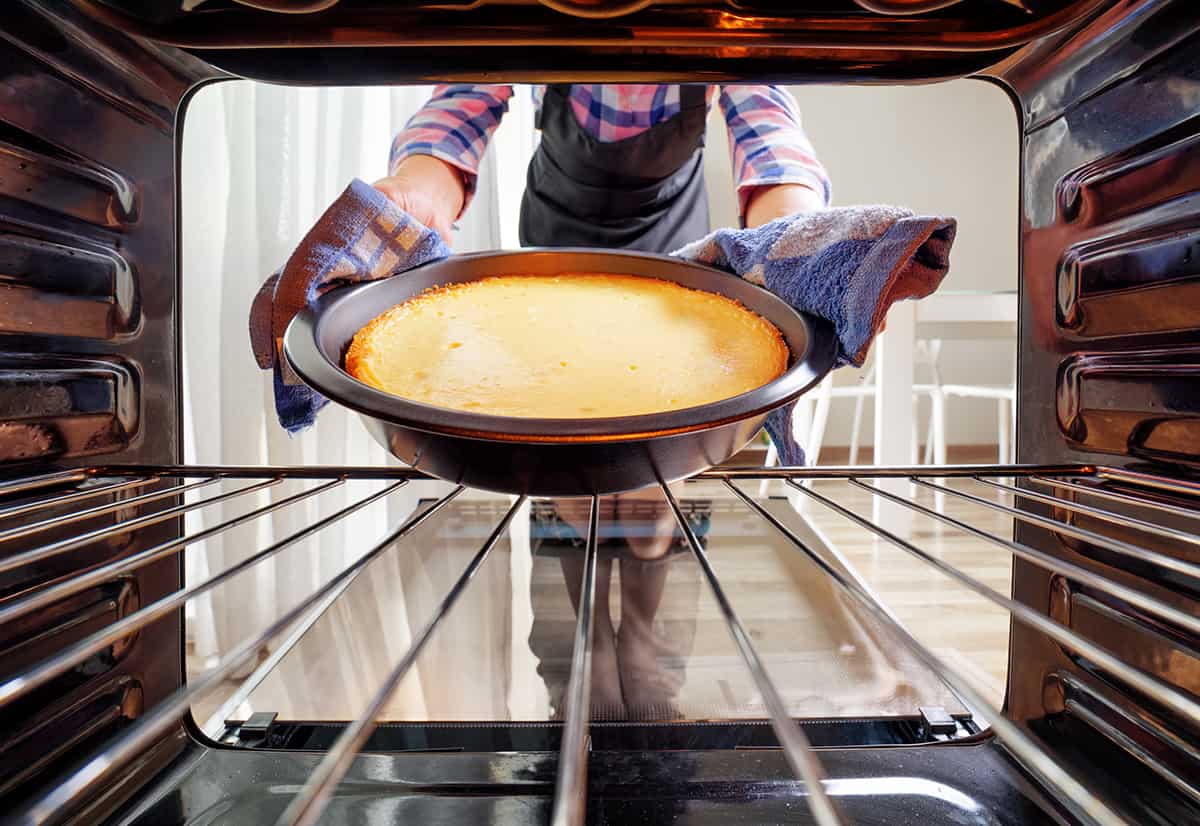Baking cakes is an enjoyable hobby you can get the whole family involved with, but it can become very frustrating when your hard work comes out of the oven looking misshapen and cracked.
‘Doming’ is a common phenomenon amongst bakers, which is when the top surface of the cake takes the form of a dome shape. A domed cake is often accompanied by cracks across the top layer of the cake, which can ruin the look of your cake. It can be caused by too much heat in the baking process, using a pan that’s too small, or an imbalance of ingredients.
Here we explain cake doming and cracking causes in more detail, and look at ways to prevent and save cakes that have domed and cracked.
What Causes Cake Doming and Cracking?
If your cake has formed a dome and has subsequently cracked, this could have happened for a number of reasons. The most common reason a cake dome is that it is being cooked at a temperature that is too high. A baking pan that is too small, or an imbalance of ingredients can also result in a cake that domes and cracks.
Heat too high
The main reason a cake will take on a dome shape is that the heat in the oven is too high. When the temperature is too high, the top crust of the cake will set before the rest of the batter has finished rising.
The inner batter will continue to rise and force itself against the set upper crust, which will cause a dome shape and usually result in cracks on the top of the cake. The dome shape will also be a result of the fact that the edges of the cake have set before the middle, so while the middle of the cake continues to rise, the sides will stay low, and you end up with a domed top.
Most commonly, recipes will give instructions on what temperature to set your oven at. If you followed the instructions then it could be that your oven thermostat is slightly off, and needs to be calibrated. You can get an oven thermometer to check this. It could also be that the temperature indicated on the recipe was incorrect.
Top shelf used
Most cakes across the board should be cooked in the middle of the oven, which is usually on the middle shelf. If you have baked a cake on the top shelf then it is going to be cooking at a temperature that is too high, and you will end up with a dome as described above. This is because heat rises, so the top of an oven is always going to be the hottest part.
Small baking pan
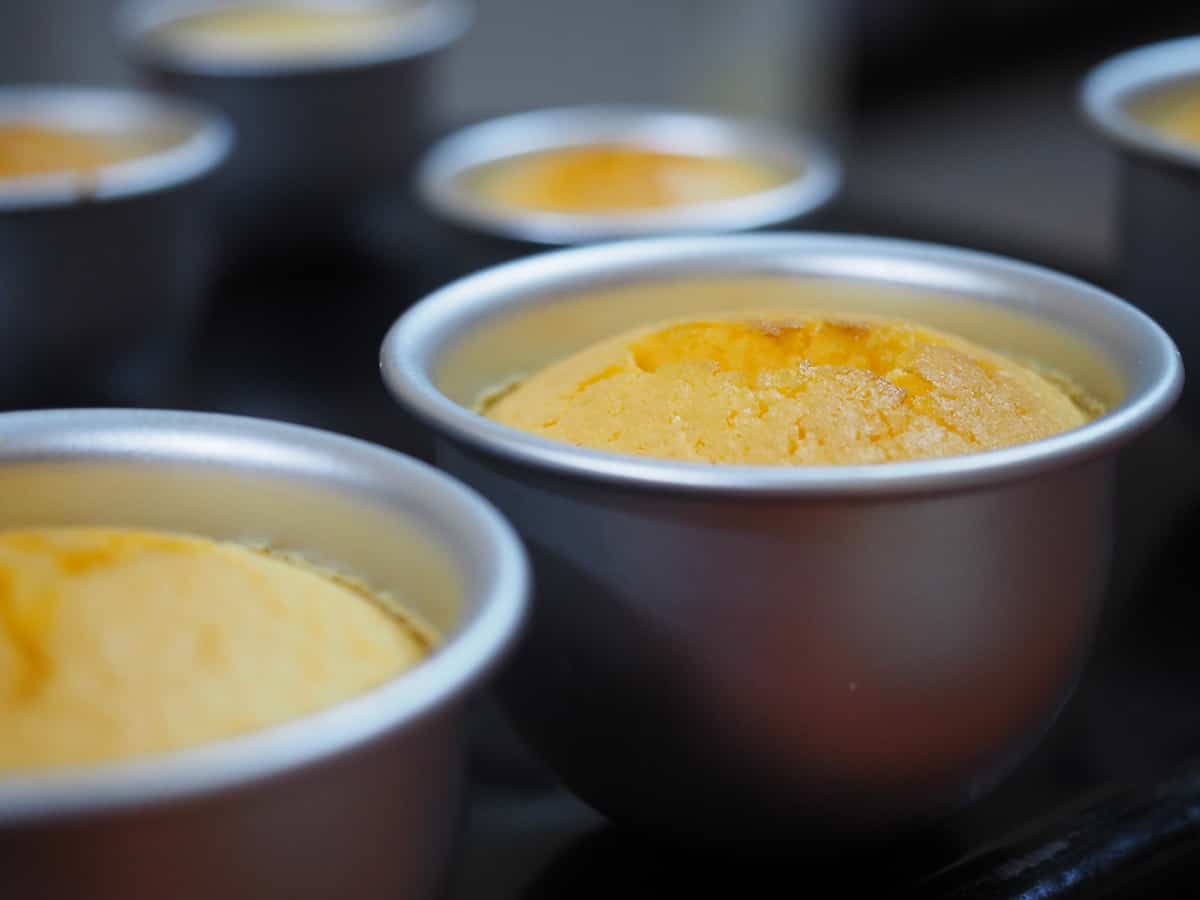
If you have used a small baking pan that is not adequate for the amount of cake batter, then you are going to end up with a domed cake which may also experience some surface cracking. This is because when a cake rises in an undersized pan, the only way it can go is up. The sides of a cake in a small pan are going to set faster than the middle of the cake, which will mean the center rises more than the rest of it.
Imbalanced recipe
If your recipe is slightly off, this can make a cake take on a dome shape. This may be that too much-raising agent has been used, such as baking soda, or it could be that the batter is too heavy and requires more liquid. The best way to ensure your recipe is well-balanced is to precisely measure your ingredients according to the recipe.
If you suspect the batter is imbalanced even when you followed the recipe perfectly, then you should write this off as a bad recipe and move on to a more reputable, tried, and tested recipe.
Over-beaten batter
If you spend too much time beating your batter, this is going to overwork it and make it heavy. A heavy batter will not have the flexibility of a lighter batter, and this can cause cracking when the cake rises.
How to Prevent Cake Doming and Cracking
It can be difficult to know exactly what has caused your cake to form a dome shape and crack on the surface, but if you follow these tips the next time you bake a cake, you should find that your cake comes out of the oven level and even.
Drop the temperature
Since most cakes form a dome shape as a result of an overheated oven, you can drop the temperature of your oven by 10ºC or 50ºF. This will mean your cake will take a little longer to cook but be sure to keep checking on it towards the end of the cooking process so that it doesn’t get overcooked. Lowering the temperature will allow the batter to set at a slower pace after much of the rising has been done. This should go a long way to reducing the likelihood of the dreaded dome shape, and prevent cracking.
Use the middle shelf
Many of us are guilty of using the top shelf in our ovens because it cooks things more quickly, but this usually means things will be crisp on the outside and undercooked on the inside. Cakes are one category of food that rarely do well on the top shelf. Use your middle shelf, or whichever shelf means that your cake sits in the middle of the oven, and this will allow the cake to cook more evenly. In turn, this should result in a level surface and the absence of cracks.
Use appropriate pan
Use a cake pan that is suitable for the amount of batter you’re making. A recipe will usually indicate what size your pan should be. If you only have smaller pans, split the batter between multiple pans so that it doesn’t shoot upwards into a dome shape.
Follow recipe
Cake recipes are a specific science, and they should be followed precisely if you want to achieve baking success. This means measuring out your ingredients exactly, refraining from using substitute ingredients, and beating the batter for the instructed amount of time. Going rogue when making a cake can lead to an overmixed cake or an imbalance in the recipe, which can lead to doming and cracking.
How to Fix a Domed Cake
A domed and cracked cake can be easily remedied, so don’t worry about it. You can serve your cake as it is, because it will still be delicious, and the cracks will simply give it a more rustic, homemade look. If the cracks are severe and the cake looks unappealing, cover it up with a thick layer of buttercream or icing.
If your cake is forming part of a layered cake, then you can carefully slice the top domed part of your cake off. This won’t be noticeable when it is slotted between other layers of cake, or when it has been covered in icing. Use the part of the cake you sliced off as a crumb topping over ice cream, or snack on it as is with a cup of coffee.



